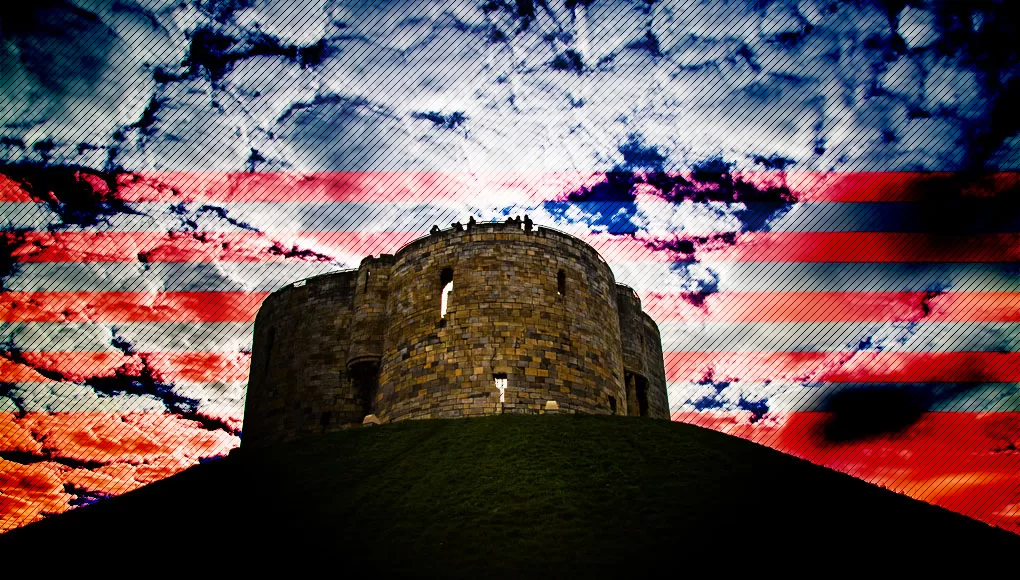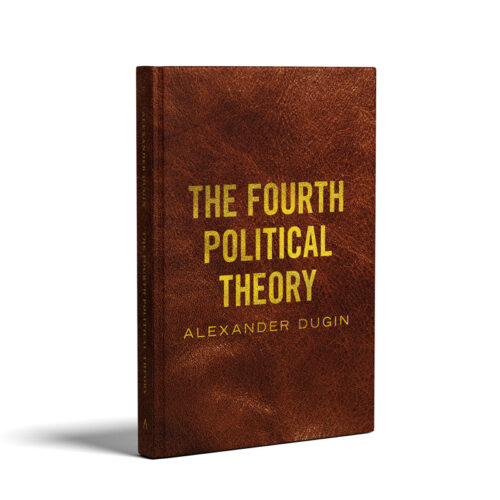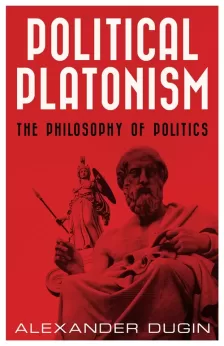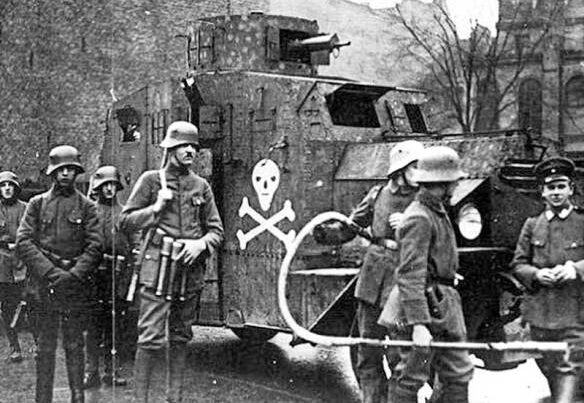The world finds itself today at a fork in the road. We can take the path toward globalism which uses cultural Marxism to subdue the masses into a lobotomized march toward ethnic homogenization, or we can assert our right to exist as unique ethno-cultures and demand the ability to preserve and protect that which makes us unique. Ultimately, globalism will destroy all world cultures, so the impetus to double down on cultural identity is in no way a ‘racist’ impulse. However, these rootless international elites have long been burrowed within the societies of the West. Ergo, Western culture is simultaneously their guinea pig, their first victim, and their launchpad to spread outward into the wider world. Ethnic-Europeans are among the first in the world to wake up to the threat that these entities pose. This realization is coupled with the understanding that we are the prime target, and most at risk of losing ourselves in the immediate. But, because we are the first to feel the pinch and speak out for our survival, our enemies hurl accusations of ‘supremacy’ against us in an attempt to undermine our struggle via means that come directly from Saul Alinsky’s famous Rules for Radicals, the handbook for cultural subterfuge. While many are waking up to this reality, too many who believe they understand the situation are oblivious to just how long this has been underway. Indigenous European culture has, indeed, been under direct onslaught for centuries. If we are engaging in a rescue mission to save ourselves, it is all for naught if we fail to be informed by our own indigenous cultural customs and ancient worldview.
Anglo-Saxon Tribal Culture
Anglo-Saxon culture is greatly misrepresented when described as ‘Christian’, even after nominal conversion. Many scholars of the period have described the ‘conversion’ process as more of a ‘Germanization’ of Christianity rather than a ‘Christianization’ of these Germanic people. Indeed, the notion that the Anglo-Saxons were ‘Christian’ in the way that we consider the meaning of the term today becomes utterly preposterous when one looks with any degree of objectivity at what was going on in Anglo-Saxon England. What we find in ‘Christian’ Anglo-Saxon England is a society wherein ancient pagan fertility rites were still being enacted by both the public and the ‘church’ clergy, and supposedly ‘Christian’ earls and other nobility were still swearing oaths by ‘the Thunderer’. Most importantly for our discussion is that the Anglo-Saxons were still operating under the old Indo-European (Aryan) mode of tribal social structure.
The Aryans seeded cultures in Europe, India, and Persia. They can be broken down into the Indo-European and Indo-Iranian branches. The Indo-Europeans then sub-divided into the majority of linguistico-cultural groups we know in Europe today; i.e. Germanic, Celtic, Slavic, etc. Indo-European culture was markedly different than the kind of society that was ushered in after the Christian invasion and subversion of European society. Aryan society was not classless. In fact, we had a society with a caste system not unlike the Hindu varna system. However, the roles and position of the commoner versus the nobility was strikingly different than what we imagine. Our view of aristocracy and peasantry is informed by the Christian feudal system, which was literally the upending of traditional European worldview and the enslavement of Europeans. The Indo-Europeans operated under what has been termed a ‘tripartite’ caste system. In reality, there were four classes: the slaves, the freemen, the nobility, and the king-priest class. There was some level of social mobility, but particulars vary by each sub-culture. The class we are particularly interested in for this discussion is the freeman class.
Christianity did not properly saturate Europe until indigenous Europeans were conquered and enslaved into the feudal system. The Christian ideology was essentially a brainwashing tool to enforce submission to this new system. Although the history books will say that the Anglo-Saxons were ‘Christian’ at the time of the Norman Invasion, the truth of the matter is that they were operating under an Aryan-Teutonic tribal social structure, still engaging in pagan practices. The gods of their ancestors were still prevalent within their cultural milieu, and, significantly, the Anglo-Saxons fought under the traditional dragon banner whilst the conquering Normans fought under the flag of the cross. The reason that Saint George was subsequently named the patron saint of England is because it is literally the story of the ‘cross’ slaying the ‘dragon’. In other words, St. George’s cross, the modern flag of England today, celebrates the enslavement of the English people. The Normans were notorious castle builders. What modern tourists often forget as that these castles were not built for any fairytale-inspired whimsy, but they were used logistically to enforce the new feudal system and keep the Anglo-Saxons under the thumb of their new Norman overlords. But, crucially, people also forget that the same figures who built those castles also built the cathedrals – and for the same purpose.
Folkright and Teutonic Society
Folkright was a cultural norm embedded into Anglo-Saxon law, essentially the Old English ‘common law’, with roots in ancient Teutonic tribal society. Teutonic culture, although there were variations depending on the specific tribe and the time period, generally followed the typical Aryan caste system. The general class of freemen were the ‘karl’ class, the Anglo-Saxon linguistic variant being called ‘ceorl’. Under Anglo-Saxon law, the rights of free men (and women) were enshrined in a cultural institution known as ‘folkright’, folcriht. The system of folkright ensured that the nobility’s power did not allow for tyranny and that all free men were guaranteed ‘unalienable’ rights under the protection of the law. (There is reason to view the American founding father’s intention as an attempt to revive ancient Teutonic society based on Old English common law). Dictionary.com defines ‘folkright’ as ‘a law or right of the people as opposed to that of the privileged classes’, and Merriam-Webster says, ‘the right of the people under the customary laws and usages especially in early England’. Germanic society has been called ‘egalitarian’ by some scholars in comparison to the Christian feudalism that would ensue. In truth, it was not without class structure and hierarchy. But, the rights of freemen were considered unalienable and it protected all freemen (which also meant women) under the rule of law. The Encyclopedia of European Peoples says that ‘folkright’ granted free commoners ‘many personal rights’ such as ‘his right to bear arms, to attend and air grievances at local courts.’ It continues on, ‘folkright consisted of the collective will of the people as embodied in rules and laws that had been established over time.’ It also says that ‘the relationship between king and commoner bypassed coercive power wielded by local lords.’ This is an allusion to the old Aryan concept of sacral kingship.
While Aryan society did maintain a caste system, as we can see, not only were the rights of the commoner enshrined in law and cultural custom, but the king-class was duty-bound to the commoners who made up the bulk of society. This system meant that nobility did not operate on the basis of wealth and a superiority of privilege that can easily result in tyranny. The ‘regular Joe’ was protected under the law and the highest office in the land had obligations to his tribesmen, just as the freemen were obligated to their king. Feudalism went hand-in-hand with Christendom. It was a system that held contempt for the old mores of honour and rights of all men and women. Interestingly, the word ‘churl’, most commonly known from Shakespearean speech as a derogatory term for a low-born peasant, is actually derived from the Anglo-Saxon ‘ceorl’, meaning the ‘karl’, or freeman, caste. So, we can see that under the Norman-Christian feudal system, the common man became an object of contempt for the ruling class.
In a book called The Constitutional History of Medieval England: From the English Settlement to 1485 published in 1937, scholar J. E. A. Jolliffe discusses how ‘folkright’ was intermingled with tribal notions of ‘blood-ties’. Just as the king was obligated to the freemen of the tribe, the larger tribe was, itself, made up of a network of kinship. He says that this kind of society ‘throws the whole weight of habit against the forces of free economy and individualism, and ignores landed or other wealth as a criterion of rank or authority. Not until the exclusive reverence for descent has been sapped by centuries of economic and political experience, is the way clear for the rudiments of feudalism and the territorial state’ (p. 5). Essentially, this kind of kinship-based tribal society with fundamental rights of free-men had to be eradicated to make way for Christian feudal enslavement. He continues,
From the assumed community of descent a common inheritance of law was deduced. Law was an attribute of the stock, and every member of it was born into folkright, a complex of privilege, status, and obligation coming to him with his father’s blood and his material inheritance of land and goods. Such a man was said to be folk-free. … Ideally, in the theory of society held by the northern world as a whole, folkright endowed the individual with all that was necessary for the completeness of life – a sufficiency of land equal in amount among equals in rank, and the status of his immediate ancestors, noble, free, or half-free. An equal law gave him a sure process of defence in folkmoots, where his landright and his person were defended by common right, and by judgment of his neighbours.
If this sounds utopian, it is important to understand that this is the worldview we European folk lived by under our indigenous ethnos. The loss of such a worldview owes its demise directly to the Christianity thrust upon us from the new elite class for the purpose of our own enslavement. To understand how closely linked the Christian church was with this new form of government, it is helpful to look at a book called Feudal Germany, by James Westfall Thompson, 1928. He explains:
In the Middle Ages the church was much more than a religious institution. It was a political, civil, social, economic institution of portentous power and of vast dimension. Its proprietary nature involved it in the network of the feudal régime to a degree which requires some effort of historical imagination to realize. Bishops and abbots were feudal lords, and the machinery of the church was intricately interwoven with the machinery of feudal government (p. 3).
Though Thompson is speaking about the Carolingian dynasty on the European continent a few centuries prior to the Norman Invasion, it is important to note that he is describing the same system. William the Bastard brought feudalism into Britain after it had been firmly established upon the European continent and simply continued on with the suppression of the indigenous Teutonic way of life. He continues:
In the tumultuous laboratory of the ninth century the old order of things was broken up and a new civilization came out of the crucible. Feudalism emerged as a complete political, economic, and social polity, and the feudal states of France, Germany, and Italy came into being,’ (p. 5).
He is describing the destruction of the Aryan way of life and forced subjugation of the European people under Christian feudalism. Thompson continues on to explain that although Charlemagne’s dynasty had attempted to control the church, very quickly, the church was in control of the state:
With the break-up of the Carolingian empire in the ninth century, the relations of state and church began to be reversed. Hitherto the state had controlled the church. Now the church began to control the state. The amalgamation of church and state became more complete than before, and the church saw to it that it was well repaid for its services to the government, (p. 5)
The establishment of the church intertwined with government was also intimately connected with the establishment of the banking system as we know it.1 Thus, the new ‘elites’, the church, and the monetary system were working in sync with one another. The feudal enslavement of Europeans was a system by which the nobility enriched themselves off of the work of serfs, who were not much better off than slaves. There was no longer a system of protection of the rights of freemen against the tyranny of the nobility. This is whence the modern idea of aristocracy versus peasantry derives. Prior to Christian feudalism, to be a ‘ceorl’ would have been a point of the pride, indicating that one belonged to the free class which was imbued with rights and protection under the law. With the instatement of Christian feudalism, the term evolved to the insult we are more familiar with, ‘churl’. One can almost see the snarling grin of our overlords as they hurl our ancient Aryan caste title at us with a sneer, spitting upon the ground toiled upon by our ancestors.
When we look at the events in the world today, more and more people are waking up to the realization that something is terribly wrong. But, as we continue to live as economic slaves to the system we are locked into, most people are too absorbed in the weekly grind to give their time, energy, and attention to the kind of deep study it entails to fully grasp what is going on, who is behind it, and just how long it has been happening. As mentioned at the outset of this discussion, Aryan society maintained a caste system – but one wherein the upper echelons were as oathed and obligated to the commoners as the commoners were to the upper castes. Each caste performed a duty to their folk in an honour-based tribal mentality. The priest tier was known to the Celts as the Druids and to the Hindus as the Brahmins. Teutonic society surely had an equivalent, or several roles which fell within that class tier. It is important to remember that in this context, the ‘priest’ class denotes scholars and bards as much as religious teachers. When our society was usurped, this class was the first to be targeted for complete annihilation. A restoration of our true ethnos would mean a complete overhaul in worldview and economic system that reinstates our ancient institution of folkright.
But, the common freeman, still enslaved by the elite banking system, cannot be relied upon or expected to put in the kind of time and study necessary to teach himself, let alone the masses, about our indigenous culture. No, for this we do need our own Druid-Brahmin tier to arise once again. Unfortunately, systems have long been in place to stop the ceorls from seeking their own authentic folkways. Christianity and its cousins (liberalism, cultural Marxism, Americanisms like Mormonism etc.) are all ideologies used keep the ceorls in a mind-cage of psychological conditioning designed to keep the freeman in a state that is not free. It is exactly the scenario described in Plato’s ‘Parable of the Cave’, wherein a person of great learning comes with a torch to lead the enslaved cave-dwellers into the light – but they cannot accept that reality is other than the shadows they have been watching dance upon the wall of the cave.
Folkright was once our unalienable right. The only thing keeping us from restoring our status as Teutonic free-folk is our stubborn refusal to leave the cave. Aryanism is in our blood. Teachers are amongst us to guide us back home again. Our own Druid-Brahmin ‘upper-caste’ were not the ‘elites’ who spat on us as they sneered ‘churl’ as an insult upon the formerly free man. No, those were aristocrats handed their position of power directly by Christian feudalism and the banking monstrosity it established. And, this system still pulls the strings today. Bring back the Teutonic Gothi and Gythja (priest/priestess) and allow them to guide us back to our own indigenous ethnos built around the blood-ties of kith, kin, clan, and tribe – and restore the folkright to its rightful place. Let the folkright never be taken from us again!
References
Dumézil, Georges. Mithra-Varuna. New York: Zone Books, 1988.
Goodson, Stephen. ‘The Hidden Origins of the Bank of England’. The Barnes Review XVIII.5 (2012): 5–14.
Herbert, Kathleen. Looking for the Lost Gods of England. Anglo-Saxon Books, 1994. Print.
Jolliffe, J. E. A. The Constitutional History of Medieval England: From the English Settlement to 1485. London: Adam and Charles Black, 1937. Print.
Jolly, Karen Louis. Popular Religion in Late Saxon England. Chapel Hill: The University of North Carolina Press, 1996. Print.
Mason, Carl Waldman and Catherine. ‘Folkright’. Mason, Carl Waldman and Catherine. Encyclopedia of European Peoples (Regional History on File). NY: Facts on File, 2006. 321. Print.
Thompson, James Westfall. Feudal Germany. Chicago: University of Chicago Press, 1928. Print.
Footnotes










Good direction, but….
Your premise on who “Teutonic Goths” were is wrong and their name,
You should seriously question who lived in the north and what language they spoke, W…… comes to mind.